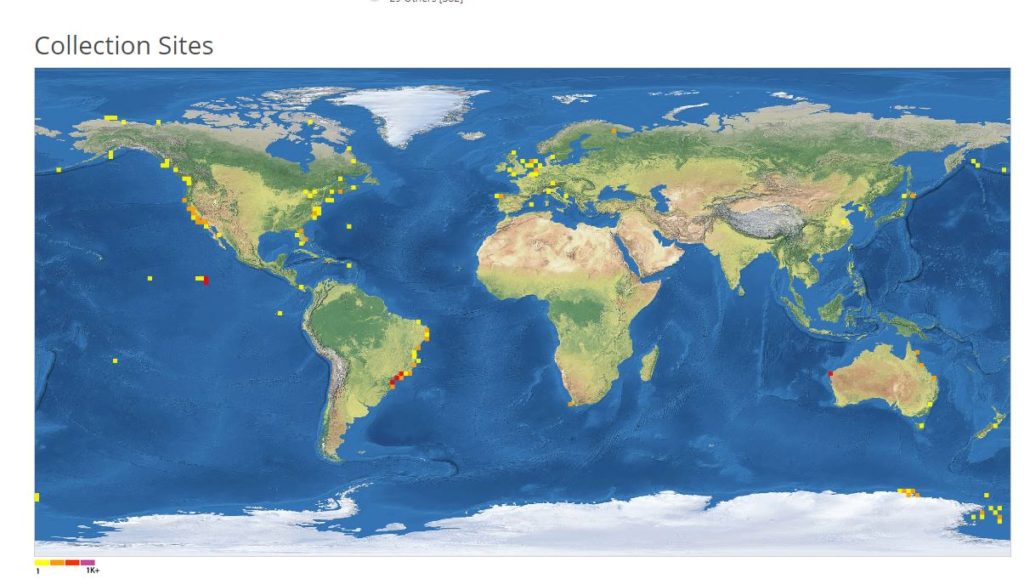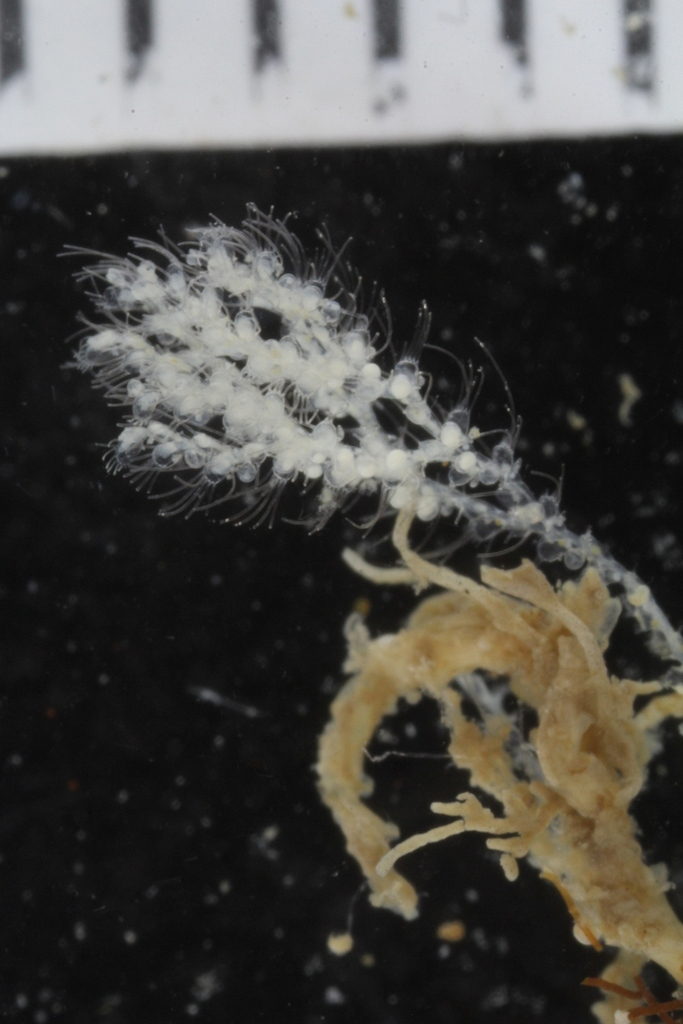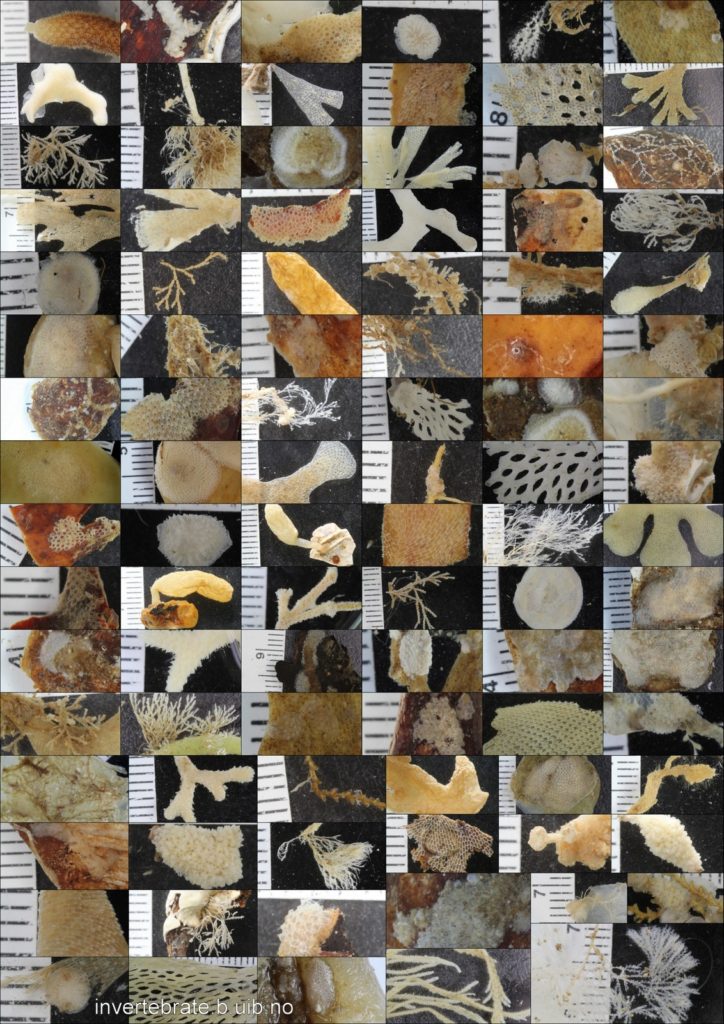By Ernst Haeckel – Kunstformen der Natur (1904), plate 23: Bryozoa (see here, here and here), Public Domain, Link You can also find the whole, gorgeous book by Haeckel here, courtesy of the Biodiversity Heritage Library
I have spent the past week and a half getting acquainted with a rather odd – yet beautiful – group of animals, the Bryozoa, moss animals. These colony-forming, mostly marine, animals are small as individuals, but the colonies can grow quite large. Globally there are around 5000 extant species recorded, with a further 15 000 species in the fossil record. We have colleagues in Oslo who work on both the fossil and the current fauna to better understand micro- and macroevolution, you can read more about that here (og her, på norsk).

Sampling site of barcoded Bryozoans in the BOLD database
This is the first attempt at barcoding bryozoans through NorBOL, and it shows (map above); hopefully we will get more dots on the map for our region soon!
This may not be an easy group to get genetic barcodes from, though – I’ve been in communication with several of the (wonderfully helpful!) experts in the field, and the consensus seems to be that getting a barcode (from the region defined as THE barcode, the 5’ end of COI) will be difficult, and that we may anticipate “..a colourful array of contaminants, as well as nuclear mitochondrial pseudogenes”. Yay. Well, we won’t know until we try!
Together with colleagues from the Natural History Collections in Gothenburg we have assembled a plate of tissue samples from Swedish and Norwegian bryozoan that I will send to the CCDB facilities for sequencing next week. We have an impressive 58 different species (1-3 specimens of each) included on the plate, as well as a few specimens that are (not yet) identified to species.
The colonies can be branching, encrusting, lacelike, lumpy…and at times pretty close to invisible! I’ve had to spend some time looking for good illustrations to know what to sample from… there are often multiple species in a jar, as well as other animals – hopefully I managed.
We’re treating this as a trial plate: is it possible to barcode museum material of bryozoans through the general pipeline, or will we need to get creative?
I’ll make a new post once the verdict is in – let’s hope for surprisingly high success rates!
Some further reading:
Lee et al 2011: DNA Barcode Examination of Bryozoa (Class: Gymnolaemata) in Korean SeawaterKorean J. Syst. Zool. Vol. 27, No. 2: 159-163, July 2011 ISSN 2233-7687
DOI 10.5635/KJSZ.2011.27.2.159
Wikipedia has a nice post on Bryozoa




